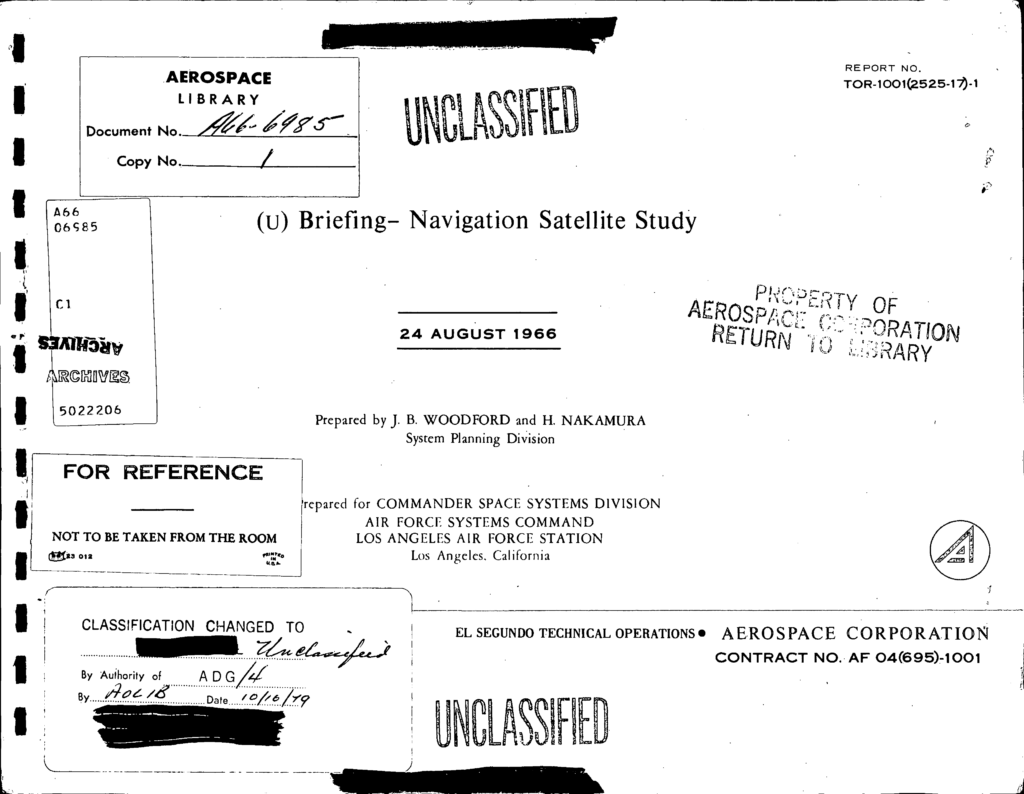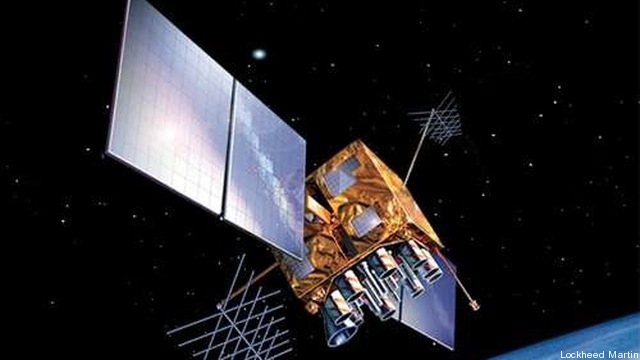GPS 2.0: Aerospace Corp. Launches Second Draft Of GPS – EXCLUSIVE
Posted on
 COLORADO SPRINGS: The Aerospace Corp. the people who brought you the concept for GPS, are launching GPS 2.0. It all began when two Aerospace Corps scientists J.R. Woodford
COLORADO SPRINGS: The Aerospace Corp. the people who brought you the concept for GPS, are launching GPS 2.0. It all began when two Aerospace Corps scientists J.R. Woodford Woodward and H. Nakamura penned a little-known briefing In 1966, “Navigation Satellite Study,” that paved the way. Tomorrow, the Aerospace Corp. will issue a new study it hopes will pave the way for the next wave of GPS, one much more resilient, much more resistant to jamming and tampering but boasting accuracy that is at least as good as the current satellite-dependent system.
“The challenge I gave this team was really to start with a clean sheet of paper,” David Gorney, executive vice president of the Aerospace Corp., tells me. Gorney led what became known as Project Sextant, named by its members for one of the first high-tech tools for determining one’s location. The team’s mission is to “change the paradigm” of GPS. Why the Aerospace Corp? It is a strange bird, a non-profit created and funded by the federal government but which runs independently. It employs many leading global experts who provide an enormous range of advice and ideas about how to effectively and efficiently design, build and operate space systems to the Air Force and Intelligence Community.
A New Architecture
How will the new approach work? Basically, Aerospace Corp. experts want the industry involved with a wider array of navigation aids, including conventional GPS from satellites, Loran, video and terrain maps, inertial guidance systems, cellular towers and individual cell phones to help them develop the new standards. And probably other sources they haven’t thought or may not have been invented yet.
“We are proposing an architecture by which any of those sources can be integrated,” Gorney explains
The data from those systems would be used by a new array of receivers — those won’t start getting built until after the standards are agreed to. But why change a fabulously successful system, one that celebrated its most accurate day ever last week? Because the current GPS system, reliant as it is on signals to and from satellites, can be jammed by enemies or mischief makers. It can also go wobbly, as it did in January when a software glitch signal altered the timing signal from 15 Air Force satellites, which broadcast to the ground a signal that was off by at least 13 microseconds. That caused half a day of headaches at companies around the world reliant on GPS.
“If an adversary or something in the environment interferes with any one of those steps with the timing itself, the clock, the communication of the satellites, clock computation or the computation of the satellite orbits to a high accuracy, or if something compromises the weak signal to the user segment, or if there’s a cyber attack, then you lose your ability to do GPS,” Gorney says.
And remember just how accurate GPS is proving in its current form, as Gorney and Malina Hills, vice president for space program operations, note. It had its “best day ever” on Monday, generating signals with an an average global accuracy of .38 meters. “It just keeps better and better thanks to the incremental changes that have been made all along,” Gorney said.
But the current system relies on a remarkably expensive enterprise of large satellites and complex ground stations. Raytheon’s deeply troubled OCX (Operational Control System) program is designed to improve the accuracy of the Position, Navigation and Timing (PNT) signal andprovide unimpeachable cybersecurity against both external and internal attack, but that approach ain’t cheap. It has doubled in cost to $3.6 billion, is years late already and stands a reasonable chance of being canceled unless things improve substantially, as Defense Secretary Bob Work made clear to reporters on his trip here.
A New Language
And GPS satellites could still be jammed or destroyed. In these days when US policy requires GPS signals guide our precision weapons to the target to ensure the least collateral damage losing that signal would not be acceptable in a time of war.
So the new GPS approach would not exclude the existing GPS satellites and ground stations. But it would require new receivers, ones capable of reading the new language that the Aerospace Corp. hopes to build with the help of industry and users. The language will rest on the new standards, in sort of the same way that HTML rests on the standards that were set to create the first Internet, Gorney says.
The Aerospace Corp. proposals are included in a report that should be cleared for sharing with its government customers today. Those who care about position, navigation and timing and want to get involved should read the briefing below:
Subscribe to our newsletter
Promotions, new products and sales. Directly to your inbox.

